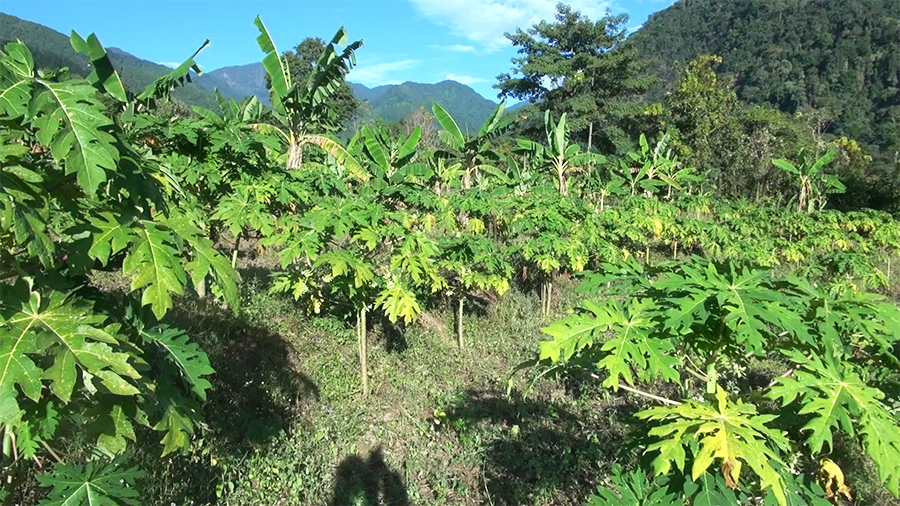
Tsirang now adds papaya to its range of farm produce grown in masses. The farmers of Sergithang Gewog are growing papaya in some 20 acres of land. The fruits will be harvested towards the end of this month. It is the first time the farmers are venturing into mass papaya production.
 The farmers of Sergithang Maed, Tashithang, and Norbugang chiwogs in Sergithang Gewog planted some 15,000 papaya seedlings in June this year.
The farmers of Sergithang Maed, Tashithang, and Norbugang chiwogs in Sergithang Gewog planted some 15,000 papaya seedlings in June this year.
The papaya trees though short can be seen bearing fruits, which will have pink flesh once mature.
The gewog agriculture extension office is expecting around 40 metric tonnes of papaya.
“Due to small landholdings, farmers here don’t take much interest in growing fruits like mango and oranges. This is because they also have to grow other crops. Papaya trees start bearing fruits after six to seven months of plantation. That’s why they grow them,” said D.B Ghalley, the Agriculture Extension Supervisor at Sergithang Gewog.
Since the farmers can harvest the fruits as early as 6 months after plantation, they say they can earn good income from the fruit.
Dechen Lhamo, a papaya grower said, “We were able to sell papaya easily when we took them to markets along with vegetables. So we thought that we could earn more if we could grow the fruit in huge quantities. Some of the papaya trees have already started fruiting. I received almost 3,000 seedlings from the gewog agriculture extension office.”
Subash Rai, a papaya grower said, “I am expecting a better market for my papaya. This is because in Tsirang we are focusing only on organic production and we are not using fertilisers.”
“Usually papayas from Tsirang are tasty. Moreover, this time we got hybrid seeds from the gewog agriculture extension office. We are told that the fruits will be bigger, unlike the ones that we have grown earlier,” said Dal Bir Rai, a papaya grower.
The Green Climate Fund and the Bhutan Ecological Society provided financial support to buy papaya seedlings.
The agriculture officials say farmers have to discard the existing papaya trees after two and a half years and plant new trees.
Pema Tshewang, Tsirang
Edited by Sangay Chezom








